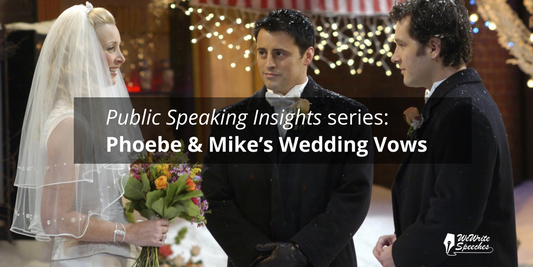Since time immemorial, our ancestors have painted pictures in listeners' minds by telling stories, passing down wisdom from generation to generation. This age-old practice is not just the bedrock of human connection but also a powerful tool for memorizing speeches. Harnessing the power of stories can make even the most complex ideas stick, turning your speech into an unforgettable journey for your audience. In this blog, we’ll explore how infusing your speech with elements of storytelling can not only engage your audience but also make your content more memorable for you, the speaker.
The importance of storytelling in human communication
From ancient oral traditions to modern cinema, storytelling has always been at the heart of human communication. Stories captivate us, make complex ideas more digestible, and stir our emotions. They tap into our innate curiosity and our desire to make sense of the world around us.
Stories are not just compelling; they are also memorable. Research shows that information presented in a narrative format is easier to remember than a list of facts. This is because stories are rich in context and evoke vivid mental images, making them stick in our memory.
Storytelling can help with remembering a speech
While a story structure won’t be suitable for every speech, it does work for some types of speeches. When applied effectively, it can serve as a powerful memory aid because it has a natural flow. Rather than trying to remember a series of disjointed points, weaving your key messages into a story provides a logical and emotional framework that makes it easier to remember and deliver your speech.
When your content is structured as a story, it follows a narrative arc, which often includes a beginning (set-up), middle (confrontation), and end (resolution). This natural structure gives your brain a 'map' of where the speech is going, aiding recall.
How to effectively use storytelling
Step 1 - Identify Your Key Points: Start by identifying the key points or messages you want to convey in your speech. These are the main ideas you want your audience to remember and take away from your presentation.
Step 2 - Create a Story Arc: Craft a narrative that incorporates these key points. Remember to have a clear beginning, middle, and end. Start with an engaging opening that hooks your audience and introduces the main theme of your speech. Develop the middle section with relevant anecdotes, examples, and supporting details. Finally, conclude your story by reinforcing your key messages and leaving a lasting impression.
Step 3 - Make It Vivid: Use descriptive language to create mental images. The more vivid your story, the more memorable it will be. Engage the senses of your audience by describing sights, sounds, smells, tastes, and textures. This sensory richness helps the story come alive in their minds and leaves a lasting impression.
Step 4 - Practice Out Loud: Practice your story out loud. This helps you get comfortable with the flow of your narrative and identify any areas that need refining. Pay attention to your tone, pacing, and gestures to enhance the overall delivery. Practicing will also improve your confidence, allowing you to connect better with your audience.
Step 5 - Be Authentic: Ensure your story is authentic and relevant to your audience. Personalize it by sharing your own experiences or those of others that resonate with the message you want to convey. Authenticity enhances its impact and memorability as people connect with real stories that touch their emotions and relate to their lives.
Conclusion
Storytelling is a powerful tool for memorable and impactful public speaking. By weaving your key messages into a narrative, you can enhance your ability to remember your speech, engage your audience, and leave a lasting impression.
Remember, the best stories come from a place of truth and resonate with the audience's experiences or aspirations. So, as you craft your next speech, think about how you can tell a story that not only you will remember but your audience will too. Happy storytelling!
This blog is part of a series on speech memorization techniques. To see the other blogs in the series (and a lot of cute foxes) click here.




